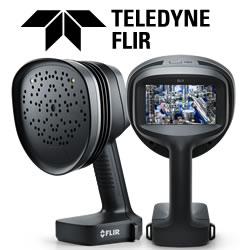Creating New Possibilities for Additive Manufacturing, Stratasys Removes Complexity From Design-to-3D Print Process
Advanced FDM Software designed to eliminate CAD-to-STL roadblock, streamlining workflow, production times, material usage – aimed at speeding time-to-market and revenue
SOLIDWORKS WORLD - Empowering designers and engineers to embrace new 3D printed possibilities, Stratasys (NASDAQ: SSYS) is further removing complexity from design-to-3D print processes. GrabCAD Print's Advanced FDM feature is aimed at ensuring design intent via intuitive model interaction to rapidly deliver strong, light, and purpose-built parts.
By avoiding laborious CAD-to-STL conversion, users are able to work in high fidelity and rapidly advance the design-to-3D print process- which can lead to boosting both time-to-market and time-to-revenue. Advanced FDM is designed to speed part production, while maintaining creation of purpose-built parts that minimize weight without compromising strength.
"For design and manufacturing engineers, one of the most frustrating processes is ‘dumbing down' a CAD file to STL format - only to require subsequent re-injection of design intent into the STL printing process," said Mark Walker, Lead Software Product Manager at Stratasys. "This software is engineered to do away with this complexity, letting designers reduce iterations and design cycles - getting to a high-quality, realistic prototype and final part faster than ever before."
With rich CAD-native build controls, the solution doesn't require manual generation of complex toolpaths - cutting overall programming times for 3D printing. Intuitive features achieve desired part characteristics through automatic control of FDM build attributes. Engineers easily select areas on native design geometry and specify design attributes - letting Advanced FDM automatically calculate 3D print toolpaths.
"GrabCAD Print Advanced FDM's geometry-based workflows have allowed us to fine-tune part builds - meeting application requirements and process parts more quickly than we could before," said Robert Heath, Additive Manufacturing Application Engineer at Eckhart. "The seamless transition of moving a build between applications is easy and intuitive."
Assigning attributes directly to CAD models, users pinpoint areas of strength and rigidity, control infills, ensure sufficient material around holes with inserts, and avoid seams. Since toolpaths are automatically generated from model assignments, the user can expect to spend significantly less time on part setup, without losing strong, high-quality, purpose-built FDM parts.
"Advanced FDM has proved invaluable in improving our part processing time. When processing a very large number of tools and fixtures in a very time pressured environment, it was crucial to ensure stronger tool areas were correct first time, every time," said Dave Hewitson, Rapid Prototyping Programmer at McLaren. "Advanced FDM negates the requirement for multiple programs - creating a more streamlined process. It's also allowed us to more effectively control the structure of end-use car parts, something that was previously very difficult with the solutions we had in hand. This means we can get better parts to the track faster."
GrabCAD's Advanced FDM is available now via download with GrabCAD Print (from versions 1.24) and is supported on the following Stratasys 3D printing systems: F370, Fortus 380mc, Fortus 380mc Carbon Fiber Edition, Fortus 450mc, Fortus 400mc, Fortus 900mc, and F900.
Learn more about the power of GrabCAD and Advanced FDM and the power of Stratasys by visiting: https://grabcad.com/print/features or https://www.stratasys.com/software
Stratasys is a global leader in additive manufacturing or 3D printing technology and is the manufacturer of FDM® and PolyJet™ 3D Printers. The company's technologies are used to create prototypes, manufacturing tools, and production parts for industries, including aerospace, automotive, healthcare, consumer products and education. For 30 years, Stratasys products have helped manufacturers reduce product-development time, cost, and time-to-market, as well as reduce or eliminate tooling costs and improve product quality. The Stratasys 3D printing ecosystem of solutions and expertise includes: 3D printers, materials, software, expert services, and on-demand parts production. Online at: www.stratasys.com, http://blog.stratasys.com and LinkedIn.
GrabCAD and Stratasys are registered trademarks and GrabCAD Print, F370, Fortus 380mc, Fortus 450mc, Fortus 400mc, Fortus 900mc, F900, and the Stratasys signet are trademarks of Stratasys Ltd. and/or its subsidiaries or affiliates. All other trademarks are the property of their respective owners.
Featured Product

FLIR Si1-LD - Industrial Acoustic Imaging Camera for Compressed Air Leak Detection
The FLIR Si1-LD is an easy-to-use acoustic imaging camera for locating and quantifying pressurized leaks in compressed air systems. This lightweight, one-handed camera is designed to help maintenance, manufacturing, and engineering professionals identify air leaks faster than with traditional methods. Built with a carefully constructed array of MEMS microphones for high sensitivity, the Si1-LD produces a precise acoustic image that visually displays ultrasonic information, even in loud, industrial environments. The acoustic image is overlaid in real time on a digital image, allowing you to accurately pinpoint the source of the sound, with onboard analytics which quantify the losses being incurred. The Si1-LD features a plugin that enables you to import acoustic images to FLIR Thermal Studio suite for offline editing, analysis, and advanced report creation. Field analysis and reporting can also be done using the FLIR Acoustic Camera Viewer cloud service. Transferring of images can be managed via memory stick or USB data cable. Through a regular maintenance routine, the FLIR Si1-LD can help facilities reduce their environmental impact and save money on utility bills.
